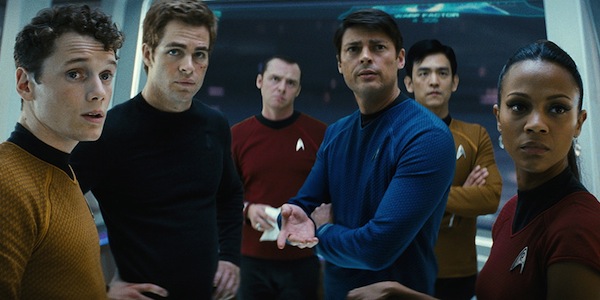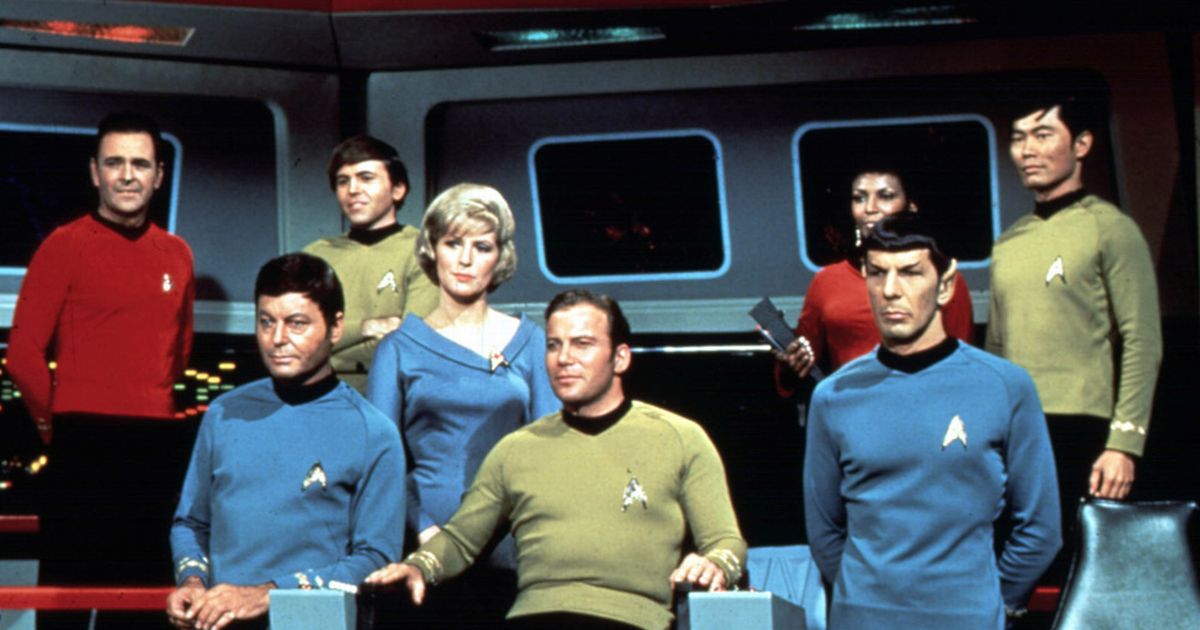This is Year Fifty. It all began in September 1966 and I was there to see it on that night in September. All Trekkies will have to see this, whether they like it or not.

What’s to like?
The cast members are superb simulacra of the Originals. That is partly looks, assisted by make-up, but also mien, accent, and attitude. The actor’s craft is to inhabit another person and they do it with ease. Bones is perfect and so is Kirk. Spock is more nebbish than the Original. Uhura is more wonder woman, and Scottie is more excitable, but these are quibbles.
The distribution of lines and incidents to the ensemble cast of the crew. Scottie, Sulu, Uhura, Spock, Bones, all have more than one moment in the camera’s sun. Only Chekov misses out, in my memory. It is not all about Kirk, as too many episodes of the Original were.

There are some zingers to be sure. Throw aways lines like ‘they say it hurts less if it is a surprise.’
The women hold their own. Uhura may answer the phone once or twice but she also delivers some surprises.
Jaylah’s literal-mindedness was amusing. Though good to have on side in a fight, Jaylah seems to be there mostly for the make-up.
The idea of heavy metal music can be used as it is in the movie was marvellous. I am trying to steer clear of a spoiler here.
The explicit tribute to the Originals in the last scene with Spock was humble.
What’s to not like?
The repetitive shoot ‘em ups are incomprehensible and pointless and there are many of them, at full volume.
The holes in the plot are sufficient to pass Africa through. The villain’s backstory is vacuous. The Franklin is … What’s the word, it is impossible to suspend disbelief.
The Federation’s own responsibility for its problems is a worn out motif in Star Trek but here it is again.
The variation are the returned veteran was the theme in the predecessor (‘Into the Darkness’) but here it is again in a slight re-configuration. These writers need to read more to find inspiration, say Jane Austen or Anthony Trollope to broaden the horizons and deepen the insight.
The theme about unity and strength is said a couple of times but left empty. Recalling as I do all those conversation with thesis writers where I would say integrate, e.g., Michels’s Iron Law, and the writer would say ‘But it is on page 46’ and indeed it was mentioned there but it was not developed and integrated into the text. Neither is the unity-strength couplet here. It is a case of ‘words without the music.’
The army of CGIs dispatched in the action scenes bring the franchise closer to the comic book status of Start Wars.
Kalara, the bait, with that strange head more or less disappeared from the story.
Summing up.
At two hours and two minutes it is about thirty-two minutes too long. The interest and intelligence of the story do not sustain the duration. It is out of balance.
The effort put into those CGIs and choreography of the action scenes might better have gone into the script.

What made ‘Star Trek’ a keeper in 1966 was that it was not just another shoot ‘em up on television where there were plenty others of that ilk. There were genuinely intellectual puzzles, like ‘Court Martial’ and morally challenging episodes, like ‘The Devil in the Dark’ and ‘The City of the Edge of Forever.’ In its current embodiment most problems are solved with a fist and a phaser. Such a contrast to the Original, e.g., ‘Nomad, ‘Return of the Archons,’ or ‘The Doomsday Machine’ where some thinking had to be done.
The Original was made for adults and ‘Star Trek: The Next Generation’ brought that to fruition. The present version is regressing to an audience of prepubescent boys which is probably inevitable since that likely describes the filmmakers from writers, directors, and producers.
